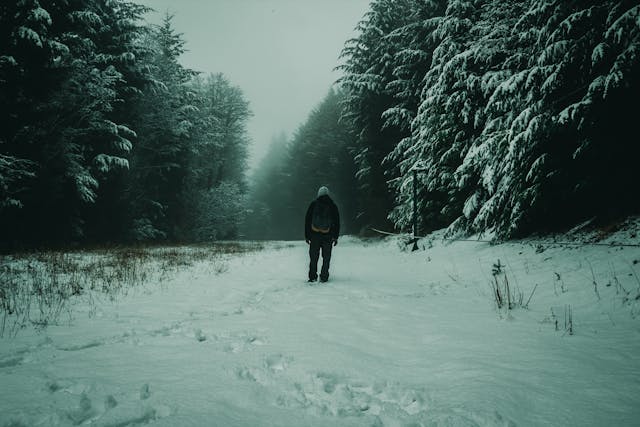Why did Travis Fimmel leave Vikings: Here’s the brutally honest deep-dive you didn’t know you needed, unpacking his exit from every angle.
You don’t just kill off Ragnar Lothbrok without leaving fans gasping, and questioning everything. For four full seasons, Vikings wasn’t just a show. It was a gritty, raw, blood-soaked journey. But it was also Travis Fimmel. His portrayal of Ragnar wasn’t just good acting. It felt lived in, as if he’d somehow stepped through a crack in time.
So when Ragnar met his doom in Season 4, thrown into a pit of venomous snakes by King Aelle, viewers didn’t just lose a character. They lost the heart of the story.
But why did Travis Fimmel really leave Vikings? Was it planned? Was it voluntary? Was it creative burnout or contractual logic? This article unpacks every layer of this legendary departure, off-screen drama, behind-the-scenes creative choices, and everything that shaped this iconic decision.
What You'll Discover:
It Was Always the Plan: Ragnar Was Never Meant to Be Forever
Let’s cut through the fog, Travis Fimmel didn’t storm off set or get axed mid-contract. His departure was, believe it or not, scripted from the start.
Showrunner Michael Hirst Had a Long Game in Mind
From day one, Vikings creator Michael Hirst made it clear: this wasn’t just Ragnar’s story. It was the saga of Ragnar and his sons. Travis Fimmel’s Ragnar was the spark, the firestarter. But Hirst envisioned a longer arc, a generational epic.
In interviews, Hirst said he always saw Ragnar’s death coming at around Season 4. The real Ragnar Lothbrok, a semi-mythological figure from Norse history, was never meant to survive the Viking Age narrative intact. His death had to be meaningful. And dramatic.
By ending Ragnar’s arc on his own terms, Hirst handed the storytelling baton to the next generation, Bjorn Ironside, Ivar the Boneless, and the rest of the bloodline. This transition had weight. It wasn’t a twist. It was a slow burn toward legacy.
Fimmel’s Reluctant Relationship with Fame
Travis Fimmel didn’t exactly come into Vikings with stars in his eyes. Fame wasn’t the endgame. If anything, he ran from it.
From Calvin Klein to Kattegat
Before Vikings, Fimmel’s claim to fame was as a Calvin Klein underwear model. Seriously. But even back then, it was clear he wasn’t built for the spotlight. He hated interviews, avoided Hollywood glam, and once told reporters he didn’t even own a television.
He wasn’t chasing stardom. He was chasing work that meant something. Acting was a craft for him, not a career ladder.
And while Vikings gave him that creative depth, layers, complexity, and internal storms, it also shoved him into the kind of spotlight he never wanted.
He Didn’t Like the Fame, But He Loved the Work
Fimmel was known to sleep in his trailer. He’d spend time with the crew more than the cast. He hated red carpets. He was most alive on screen, in the dirt and blood, slipping into Ragnar’s cracked psychology.
So when his character arc reached its peak, Fimmel didn’t fight to stay on the show. In fact, he embraced the closure. He wasn’t trying to stretch his screen time or cling to fame. In many ways, his exit was part of his ethos.
Storytelling Over Star Power
One of the boldest decisions Vikings made was to kill its main character in the middle of its run. That’s not standard TV playbook. Shows usually hang onto their stars like life rafts.
But Vikings was never built to worship one character. And Travis Fimmel respected that.
A Risk That Paid Off
Killing Ragnar was a gamble. Viewers were emotionally anchored to him. But Hirst and Fimmel both believed that a story should serve its own truth, not the actor’s contract, not the network’s ratings game.
By leaving when the story demanded it, Fimmel helped make Vikings more than just a historical drama. He helped it become art.
And here’s the kicker, after Ragnar’s death, the story didn’t crumble. It evolved. Bjorn took the wheel. Ivar brought madness. The world expanded. Because Fimmel left, the series grew beyond him.
That’s rare. And brave.
Creative Burnout: How Long Can You Be a Viking King?
Let’s talk honesty. Playing Ragnar wasn’t a walk in the park. It was emotionally exhausting, physically brutal, and spiritually draining.
Living Inside a Broken Mind
Fimmel’s Ragnar wasn’t some one-dimensional warrior. He was tormented. Brilliant. Flawed. Often silent, but screaming internally. There’s weight in that kind of performance.
As the seasons progressed, Ragnar unraveled, addiction, betrayal, loss. Fimmel dug deep. And that kind of work? It takes a toll.
Even Hirst admitted that Fimmel wasn’t the type of actor who could stay in a role for ten years. He burns bright and fast.
Fimmel himself hinted in interviews that he was emotionally exhausted by the end of Season 4. He gave everything to the role. And once Ragnar’s arc came full circle, his rise, his fall, his redemption, it was time to step away.
Behind the Scenes: Fimmel’s Final Days on Set
Ragnar’s final scenes weren’t just scripted farewells. They were emotionally loaded moments for the entire crew.
Filming the Snake Pit Scene
Shot in Ireland, the infamous snake pit sequence was one of the most intense in the series. Fimmel insisted on doing as many stunts as possible himself, even though the scene was claustrophobic and physically punishing.
The crew reportedly went quiet after filming. Not in sadness, but in reverence. It wasn’t just the end of Ragnar. It was the end of something sacred.
Fimmel didn’t say much on his last day. That’s his style. No grand speeches. Just quiet nods. The kind of goodbye that carries more weight than words.
Post-Vikings: What Travis Fimmel Did Next
Let’s be clear, Fimmel didn’t “disappear” after Vikings. He just pivoted hard toward roles that kept him out of the mainstream echo chamber.
Projects with Edge
He chose parts in projects like Raised by Wolves (sci-fi weirdness meets parental chaos) and Danger Close (a gritty war drama). These weren’t commercial cash-ins. They were stories with teeth.
Fimmel tends to gravitate toward scripts that are risky, layered, and emotionally messy. And he prefers ensemble casts, less spotlight, more space to experiment.
Still Avoiding the Hollywood Machine
You won’t catch him doing talk show circuits or front-row fashion weeks. He’s just not interested.
Fimmel once told a reporter he prefers working on farms and fishing when he’s not acting. That kind of authenticity? It bleeds through in his characters.
The Fans’ Reaction: Grief, Respect, and Endless Theories
The day Ragnar died, social media lit up. People weren’t just shocked. They were heartbroken. Some even called it the “Game of Thrones-level moment” for Vikings, a reference to another fantasy world that dared to kill off central characters.
But here’s what made Fimmel’s exit different: it wasn’t done for shock value. It was deliberate. And respectful. Fans picked up on that.
Fan Tributes and Emotional Fallout
YouTube was flooded with tribute videos. Reddit threads dissected every line of Ragnar’s last episodes. People analyzed the snake pit monologue like it was Shakespeare. Because, honestly, it kind of was.
There was grief. But also deep respect. Fimmel left on top, when his character was still beloved, still raw, still unforgotten.
The Legacy of Travis Fimmel’s Ragnar
You can recast Superman. You can reboot Batman. But you can’t replicate Ragnar Lothbrok.
More Than a Viking
Fimmel turned a historical figure into a cultural icon. Ragnar became a reference point in conversations about leadership, masculinity, mental health, and mortality.
He was brave, but often broken. Ambitious, yet philosophical. That duality made him magnetic.
And Fimmel? He carried all of that without turning it into a performance. It felt like watching someone live a life, not act it.
That’s why the question lingers: Why did Travis Fimmel leave Vikings?
Because sometimes, walking away is what preserves the legend.
Key Takings
- Ragnar’s death was planned from the beginning by showrunner Michael Hirst to transition the story to Ragnar’s sons.
- Travis Fimmel was never chasing fame; he preferred storytelling and personal authenticity over celebrity.
- His portrayal of Ragnar was emotionally taxing, and he exited when the character arc reached natural closure.
- Fimmel’s departure helped elevate Vikings from a star-driven series to a multi-generational saga.
- Post-Vikings, Fimmel chose meaningful, offbeat roles and remained fiercely private, avoiding mainstream fame.
- Fans respected his exit, recognizing it as one of the most poetic and powerful character deaths in modern television.
- Travis Fimmel’s Ragnar left a legacy that no actor or reboot is likely to replace anytime soon.





